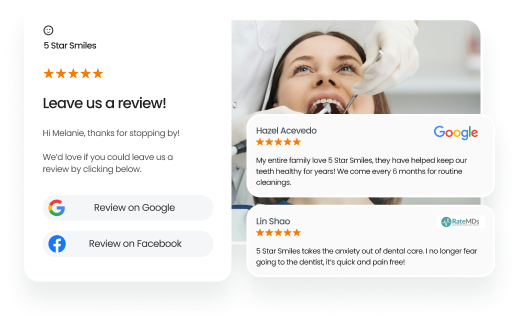Online PR and reputation management are how today’s brands win trust, dominate search results, and stay resilient, no matter the headlines or hashtags.
Your brand’s online reputation is shaped better by what others say, share, and search rather than what you say about your business.
Whether it’s a positive Google review, a viral tweet, or a headline in a major publication, your public image is shaped in real-time, and PR and reputation management are the forces behind it.
While public relations fuels momentum with compelling stories, strategic media relations, and broad visibility, reputation management ensures that every moment strengthens your credibility, not weakens it.
Together, they define how the world sees your brand and why it should trust you.
This blog breaks down how to unify these disciplines, align your online reputation management strategy with your PR campaigns, and use solutions like Birdeye to monitor, optimize, and elevate your brand’s online image across every social media platform, search engine, and review site.
Table of contents
- The role of public relations (PR) in reputation management
- Understanding online reputation management (ORM)
- Comparing online PR vs reputation management
- How Birdeye helped Coleman Taylor Transmissions build a stronger online presence
- Steps for effective online reputation management
- Building a combined online reputation management strategy
- Future trends in digital PR and online reputation
- FAQs on online PR and reputation management
- Final thoughts: How to get a complete ORM solution
The role of public relations (PR) in reputation management
Public relations (PR) plays a critical role in shaping the brand’s reputation long before customers ever leave a review.
What is PR?
Public relations (PR) is the art of influencing public perception by managing how a brand communicates with its target audience. It’s about shaping the narrative, fostering trust, and elevating the brand’s reputation through earned media, strategic storytelling, and consistent outreach.
Through press releases, media placements, interviews, and thought leadership, PR builds and protects a brand’s image in the eyes of customers, stakeholders, and the public.
PR strategies that support online reputation management
Effective PR doesn’t just generate buzz; it fortifies your online reputation. Here’s how PR directly supports ORM:
- Press releases that spotlight achievements, community involvement, and innovation, reinforce a positive brand image.
- Strategic media relations with journalists and influencers can amplify the brand’s message.
- Proactive crisis communication protects the brand’s reputation before misinformation spreads.
- Purposeful PR campaigns reflect brand values and increase relevance with your target audience.
PR and reputation management synergy
Both PR and online reputation management operate on different fronts, but they’re strongest when aligned. PR is forward-looking and proactive, setting the narrative in motion.
ORM is vigilant and reactive, ensuring that the story holds firm across online platforms, even in the face of criticism. Together, they not only shape how your brand image is perceived but also build lasting customer loyalty in an environment where trust is everything.
Understanding online reputation management (ORM)
In the digital age, your brand image comprises what people find, share, and believe about you online. Managing online reputation is now a strategic necessity, not just a reactive function. It’s how brands build trust, mitigate risks, and shape public perception long before a customer fills out a contact form.
What is ORM?
Online reputation management (ORM) is the ongoing process of tracking, influencing, and improving how a brand is perceived across online platforms, from search engine results and review sites to forums and social media feeds. At its core, ORM is about crafting a positive image, protecting it from harmful content, and responding strategically to feedback.
The objective? Strengthen trust, promote a positive online presence, and build lasting credibility with your target audience. While PR professionals focus on visibility and awareness, ORM ensures that every touchpoint, from a Google review to a tweet reinforces your brand’s reputation.
Why online reputation matters
1. 84% of consumers watch YouTube videos before making a purchase decision
2. According to Birdeye, 78% of customers say they would avoid a business with a poor online reputation
In a world where perception equals profit, your brand can’t afford to leave its image to chance. That’s why a proactive Online Reputation Management (ORM) strategy is essential, one that covers every touchpoint where your brand shows up online.
Key ORM activities
To build and maintain a positive online reputation, your strategy should include:
- Monitoring brand mentions in real-time with advanced tools like reputation management software
- Maintaining a consistent social media presence and actively responding to both praise and criticism
- Publishing positive content, including testimonials, case studies, and thought leadership that supports your brand story
- Leveraging search engine optimization (SEO) to promote favorable content and suppress negative results
- Establishing a robust review management system to manage and respond to online reviews across platforms
ORM isn’t just about putting out fires, it’s about building a reputation strong enough to withstand them. When done right, it becomes a growth engine that boosts credibility, increases visibility, and continually shapes public perception in your brand’s favor.
Comparing online PR vs reputation management
Key differences
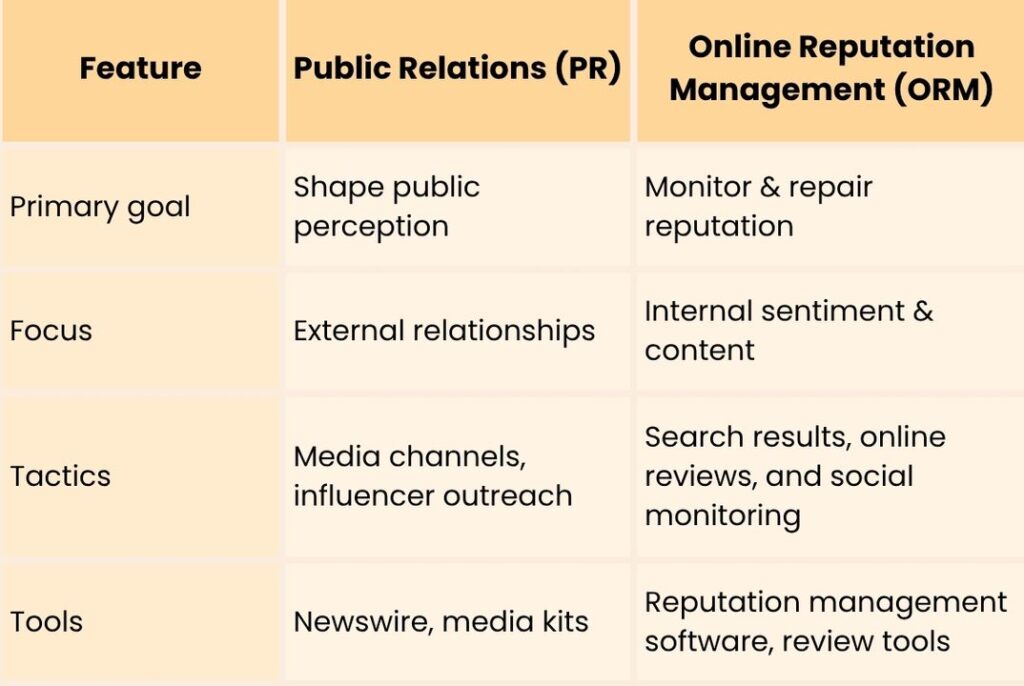
Where they overlap
- Crisis management and damage control
- Promoting positive brand image across media channels
- Influencing brand mentions and customer feedback on social platforms
While understanding the differences between PR and reputation management is key, seeing them in action shows their true impact, just like in the case of Birdeye and Coleman Taylor Transmissions.
How Birdeye helped Coleman Taylor Transmissions build a stronger online presence

The brand
Founded in 1961, Coleman Taylor Transmissions is a trusted name in automotive repair, with 14 locations across the Memphis region. Known for exceptional service and deep technical expertise, the company sought to strengthen its online visibility and reputation to match its long-standing offline credibility.
The challenge
Despite its strong legacy, Coleman Taylor faced digital hurdles:
- Inconsistent business listings across Google, Facebook, Bing, and Apple
- Low visibility in local search results
- Manual, fragmented review response processes across multiple locations
- Limited insights into SEO performance and online engagement
These issues weakened their positive online presence and created friction in managing their reputation online at scale.
The solution
Partnering with Birdeye, Coleman Taylor implemented a unified strategy combining Birdeye Listings AI and Birdeye Reviews AI to elevate their digital footprint.
- Listings: With Birdeye’s centralized dashboard, the team updated and synced business information across 588+ listings instantly, boosting accuracy and local SEO.
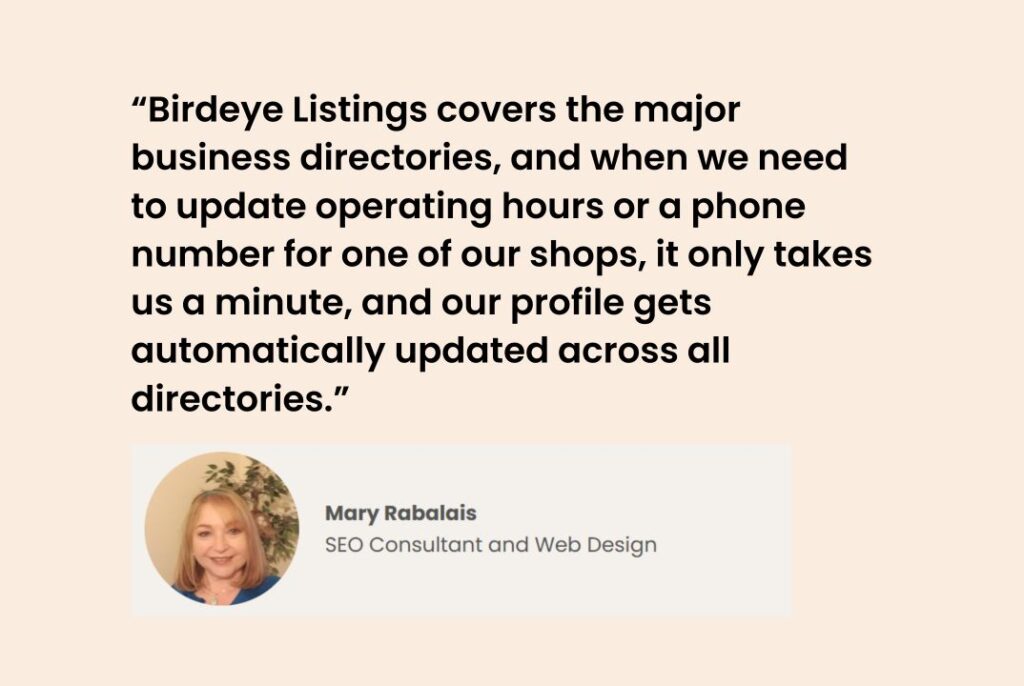
- Reviews: They generated 1.7K+ new reviews and used AI-powered tools to respond efficiently while maintaining brand voice and consistency.
- Performance: The result? 475.7K profile impressions, 80.3K call clicks, and measurable improvements in customer engagement and search visibility.
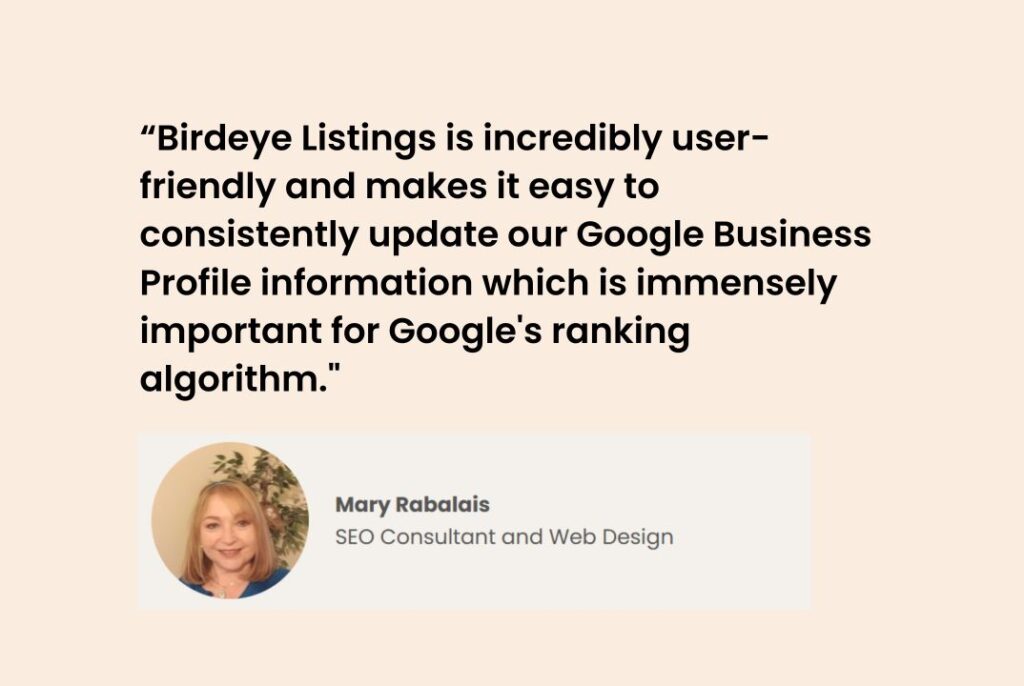
With Birdeye, Coleman Taylor now leads with confidence, maximizing brand visibility, automating review management, and turning reputation into a competitive advantage.
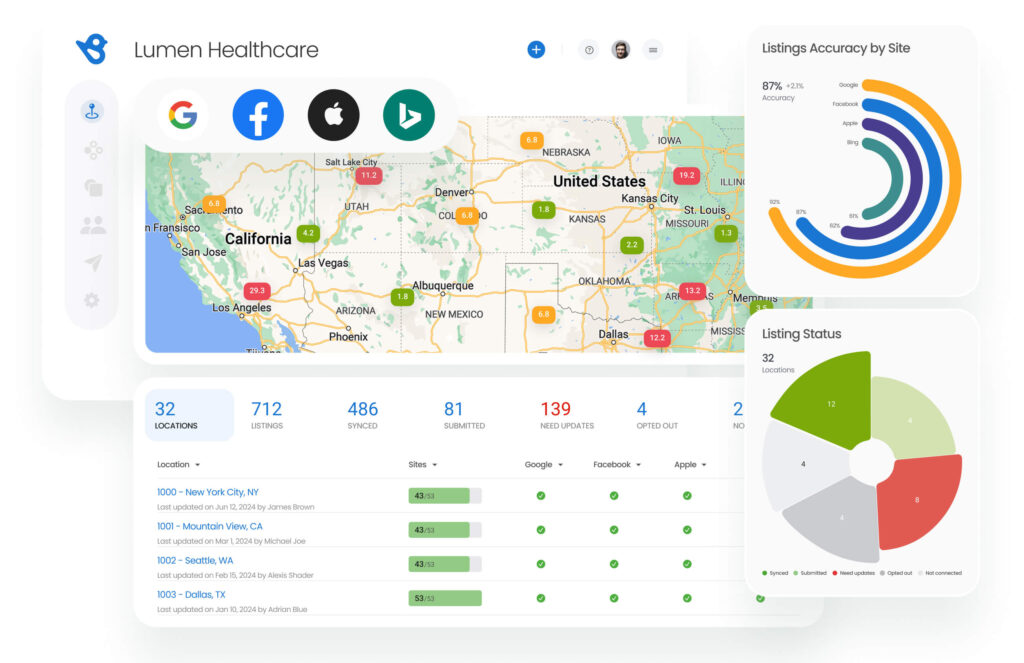
Learn more about Birdeye and Coleman Taylor Transmissions case study
Steps for effective online reputation management
Whether you’re a franchise brand, a healthcare provider, or a retail chain, following the right steps can turn your online reputation into a powerful asset that drives brand loyalty, credibility, and conversions.
Let’s explore the four foundational pillars of managing your brand’s reputation online:
1. Monitor your online presence across all digital touchpoints
The first step in any successful online reputation management strategy is visibility, knowing what’s being said about your brand and where. Your reputation lives on social media platforms, review sites, industry forums, and even third-party blog posts. If you’re not monitoring these channels, you’re flying blind.
Solutions like Birdeye offer unified dashboards that let you monitor brand mentions across social media, news publications, and even niche forums. You can track customer concerns in real-time and gain insights from social media conversations (Birdeye Social AI), media coverage, and competitor activities (Birdeye Competitive AI), all in one place.
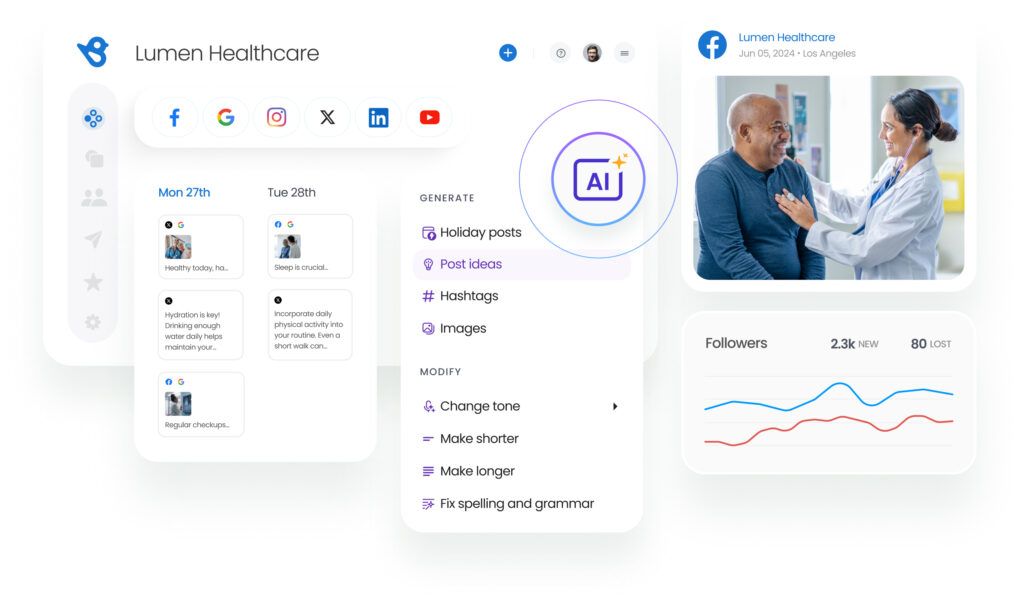
Proactive monitoring allows you to spot issues early, prevent escalation, and build a clear roadmap for action, which is especially vital in crisis management.
2. Respond to online reviews the right way, strategically and empathetically
Responding to online reviews isn’t merely courteous; it’s a strategic advantage. It can be regarded as a public-facing opportunity to show accountability, transparency, and commitment to customer satisfaction.
- Acknowledge both positive and negative feedback promptly.
- Personalize your responses to reflect genuine care, not canned templates.
- Use negative reviews as opportunities to showcase problem-solving and reinforce your brand’s values.
Timely, respectful responses reflect positively not only on the individual customer but on every future customer who reads them. They signal that your brand listens, adapts, and values brand loyalty. In fact, consistent review engagement can be one of the most effective modern PR strategies for maintaining a positive reputation.
3. Create positive content to influence public perception actively
Reputation goes beyond damage control; it’s your opportunity to define the narrative before anyone else does. By publishing the right content, you can shape public perception in your favor.
Create and promote content that reflects your values, successes, and impact:
- Share customer testimonials, case studies, and team spotlights
- Publish blogs that offer value, demonstrate expertise, and support your public relations efforts
- Highlight community involvement, awards, or charitable initiatives to reinforce trust and goodwill
It also complements your broader social media and PR strategies, reinforcing your messaging across all online platforms.
4. Use SEO to improve visibility and control your narrative
No online reputation management ORM strategy is complete without a strong search engine optimization (SEO) foundation. After all, when someone Googles your brand, what they see on page one sets the tone for everything else.
Here’s how SEO supports online reputation:
- Optimize online content (blogs, reviews, press releases) to rank higher in relevant searches.
- Suppress negative content by promoting high-authority, positive material.
- Target branded and location-based keywords to ensure your business appears at the top, especially on mobile and voice searches.
- Embed positive content into your social media strategy to boost engagement and search relevance simultaneously.
An SEO-first approach gives you control over how your brand is discovered, interpreted, and remembered.
The most successful brands use a blend of online reputation management (ORM), social media, and modern PR strategies to protect and continuously elevate their image.
With the right online reputation management tools and a thoughtful approach, you can respond to real-time feedback, publish with purpose, and ensure that your positive reputation is the version of your brand the world sees first.
Lead the narrative. Earn the trust.
Want to see the impact of Birdeye on your business? Watch the Free Demo Now.
Building a combined online reputation management strategy
To win in today’s fast-paced digital environment, brands need a unified approach that merges the storytelling power of public relations with the vigilance and responsiveness of online reputation management.
This way, businesses can build credibility, drive brand loyalty, and maintain a consistent message across every customer touchpoint, from media articles to review sites to TikTok videos
Here’s how to build a truly integrated PR and online reputation strategy that delivers long-term value:
Integrate PR and ORM into a single strategy
Too often, PR professionals and ORM teams operate in silos, PR focuses on narratives and visibility, while ORM puts out fires. But when these roles align under one umbrella, you unlock a powerful flywheel of proactive and reactive reputation control.
- Unite your PR and online reputation teams with shared KPIs and reporting tools.
- Ensure every press release, influencer partnership, and social campaign also supports ORM objectives, like boosting positive online reviews or responding to negative content.
- Collaborate on managing media relations to maximize control over how your brand appears in both mainstream media and digital review sites.
Whether you’re working with an in-house team or a public relations firm, the key is to make sure your message is consistent, strategic, and aligned with your core reputation management goals.
Use the right technology stack to scale smartly
Without the right tools, managing a unified strategy across channels becomes chaotic. That’s where modern reputation management software comes in. A platform like Birdeye helps you automate and scale without losing visibility or control.
With Birdeye, brands can:
- Monitor brand mentions and sentiment across over 3,000+ channels, including Google, Instagram, Facebook, and TikTok.
- Automate review responses, content creation, and social media management to save time and ensure consistency.
- Use advanced social media monitoring tools to detect shifts in customer sentiment early, learn about the best time to post, and prevent harmful content from spiraling.
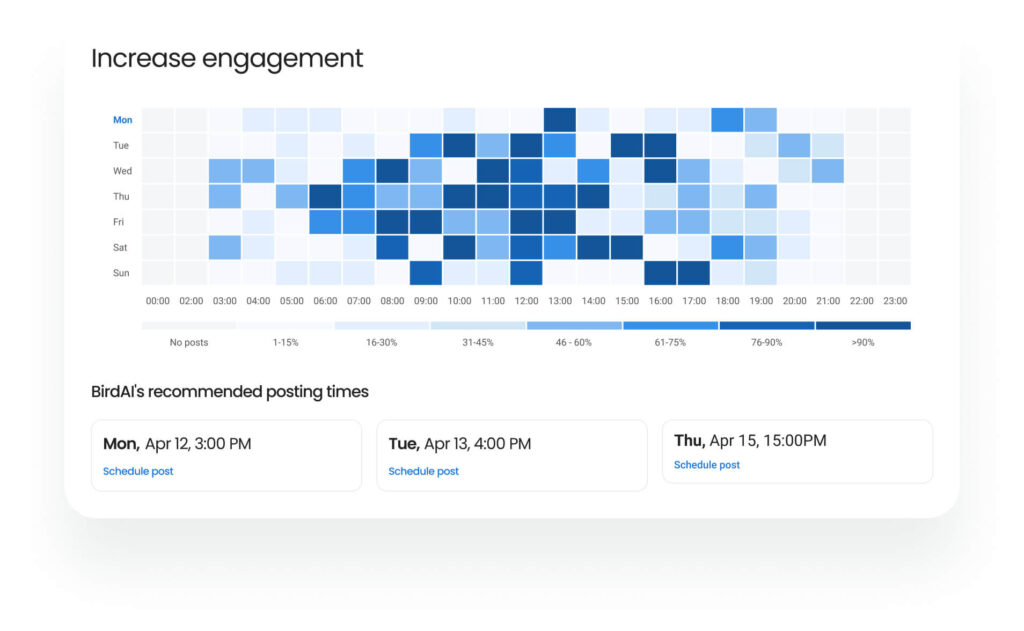
This kind of integrated tech helps you respond faster and lets you lead the conversation before it even has a chance to turn against you.
Track progress and optimize for long-term results
A strategy is only as strong as the insights behind it. Unified dashboards like those offered by Birdeye make it easy to evaluate your performance across PR and online reputation efforts in one place.
Here’s what to measure:
- The volume of brand mentions across social, web, and review sites.
- Customer sentiment scores and trends over time.
- Rate of positive online reviews vs. negative ones.
- ROI across content campaigns, public relations initiatives, and ORM activities.
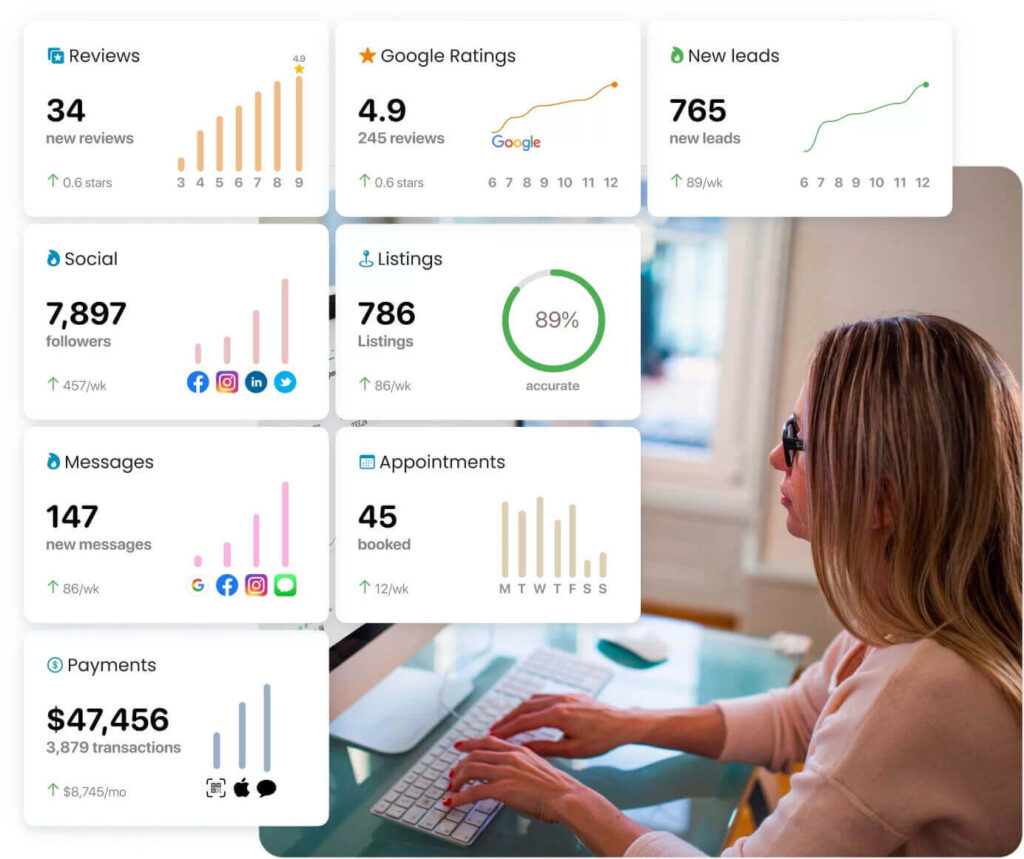
Setting the right KPIs ensures your strategy stays focused on outcomes, not just activity. Whether you’re aiming to improve brand loyalty, reduce churn, or bury outdated negative content, real-time tracking gives your team the clarity to adapt and grow.
With integrated strategies, smart tools, and unified teams, brands can control the story, manage perception, and stand strong, no matter what the internet throws at them.
Future trends in digital PR and online reputation
The future of digital PR and online reputation is fast-moving, tech-driven, and laser-focused on audience relevance. What’s coming is a complete shift in how brands manage perception, connect with their target audience, and maintain a resilient reputation online.
Here are five powerful trends that will define the next era of PR and online reputation management:
1. AI-powered ORM will predict sentiment before it becomes a crisis
Artificial intelligence is moving beyond automation into prediction. Modern online reputation management (ORM) GenAI platforms like Birdeye will soon identify subtle sentiment shifts across search engines, review platforms, and social channels before they trend.
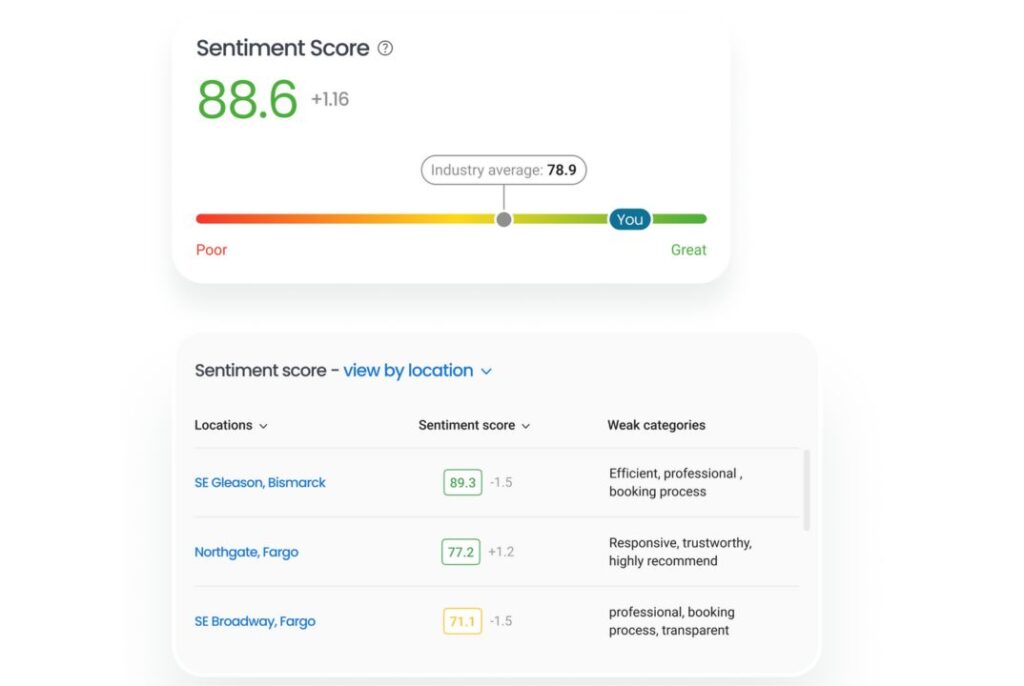
This means brands can act early, pivot messaging, and resolve minor issues before they become public crises. AI’s ability to spot emotional language in reviews, spot patterns in star ratings, and track sudden increases in mentions will redefine crisis management from reactive to preemptive.
2. Owned media will become the brand’s most powerful defense
As reliance on third-party platforms becomes riskier (thanks to unpredictable algorithms and viral volatility), brands will double down on owned media, blogs, websites, email lists, and brand-owned content hubs.
Why? Because owned media allows complete control over the message and its delivery. It becomes the foundation for building trust and credibility. When media coverage is delayed or missing, your owned content ensures your story is still being told, indexed by search engines, and seen by your target audience on your terms.
3. Video content will drive emotional connection and trust
In the world of online reputation, attention spans are short, but videos linger. From YouTube video explainers to Instagram Reels and TikTok testimonials, video content will take center stage in shaping public perception.
Expect more brands to create emotionally compelling videos that showcase behind-the-scenes culture, real customer experiences, or executive transparency. These videos won’t just support social media marketing; they’ll become a critical part of reputation-building, humanizing brands and amplifying trust in a way static content can’t.
4. Hyper-personalized PR messaging will improve engagement
Generic customer messaging is fading fast. Future PR strategies will be deeply personalized, targeted not just by demographics but by behavior, preferences, and sentiment. Whether through segmented email outreach, tailored media pitches, or location-based PR campaigns, personalization will be the key to standing out in a noisy digital space.
The more aligned your message is with your target audience, the more likely you are to earn attention, coverage, and credibility. This shift will also improve brand engagement across all owned and earned channels.
5. Cross-platform insights will drive smarter, unified strategies
The silos are out. Tomorrow’s reputation leaders can use GenAI platforms like Birdeye to unify data from review sites, social media, search engines, and media coverage into one intelligent dashboard.
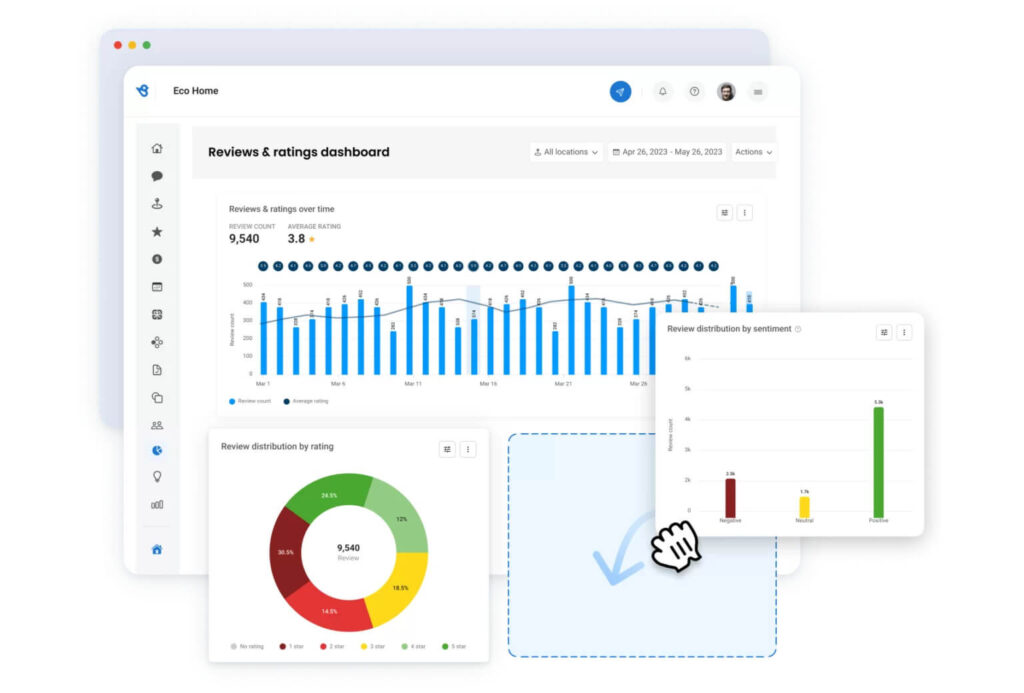
These cross-platform insights will inform everything from where your messaging lands to how your PR team responds to real-time feedback. With visibility into what’s working (and where), brands can adapt faster, measure ROI more accurately, and strengthen their reputation online holistically, not just in parts.
The future of PR and online reputation belongs to agile, transparent, and data-smart brands. With Birdeye Reports, you can get both real-time insights and trends based on data, empowering you to act instantly while planning strategically. Those who embrace AI, own their narrative, and humanize their content will lead the conversation, not chase it.
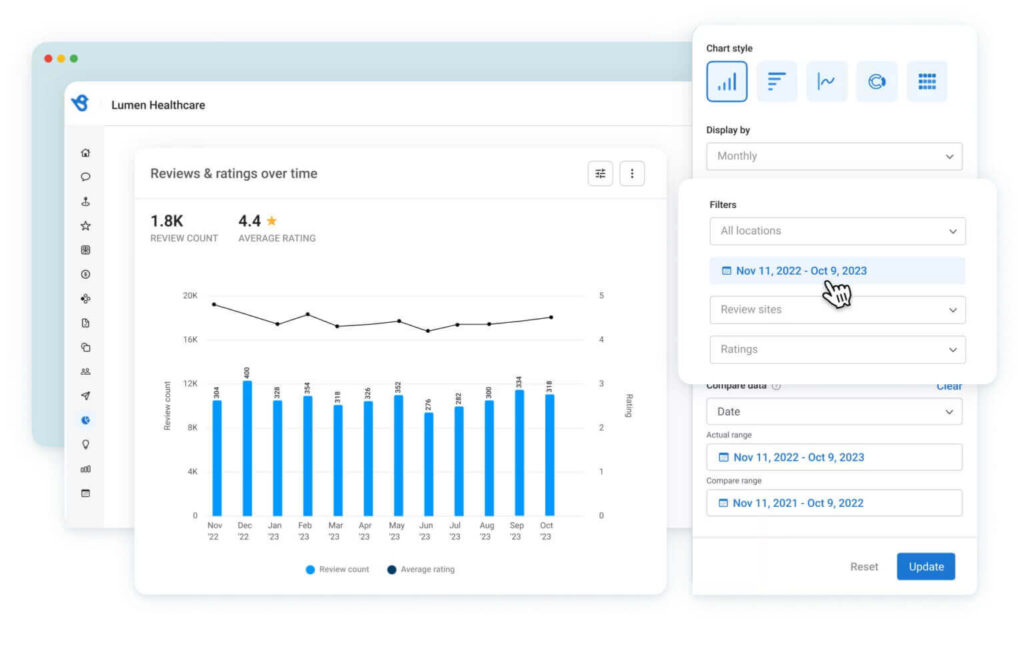
FAQs on online PR and reputation management
PR and online reputation management work together by aligning proactive storytelling with reactive monitoring, helping brands create and protect their positive image across all online platforms.
Steps include tracking brand mentions, responding to online reviews, publishing positive content, and optimizing for search results using reputation management software.
1. Monitor your brand’s social media presence
2. Respond to negative reviews quickly
3. Encourage positive online reviews
4. Publish fresh, SEO-optimized content
PR and reputation management differ in scope. PR is about proactive storytelling and media outreach, while ORM is about managing customer feedback, search visibility, and public perception.
Social media is critical for ORM. It amplifies brand mentions, highlights customer engagement, and, if unmanaged, can be both a reputation asset and a risk.
Final thoughts: How to get a complete ORM solution
Undoubtedly, in our current age, where reputations are made or broken in search results and social media feeds, you can’t afford to be passive. Winning brands don’t wait for public opinion to form; they shape it. That’s exactly what Birdeye enables you to do.
As the real deal in reputation management and public relations, Birdeye GenAI solutions go far beyond monitoring. They give you the power to lead every conversation, command attention, and maintain a positive online presence, even during crisis management.
With AI-driven insights and real-time control, Birdeye helps you:
- Elevate brand visibility across every major social media platform.
- Turn review management into a competitive advantage by responding faster and smarter with Birdeye Reviews AI.
- Publish high-impact online content that reinforces trust and authority.
- Eliminate negative content before it gains traction.
- Align every touchpoint with your brand’s voice, values, and PR reputation management strategy.
Your audience is watching. Your competitors are listening. And the internet never stops talking. Birdeye ensures that your brand leads the conversation. See it in action. Watch a demo today.

Originally published









